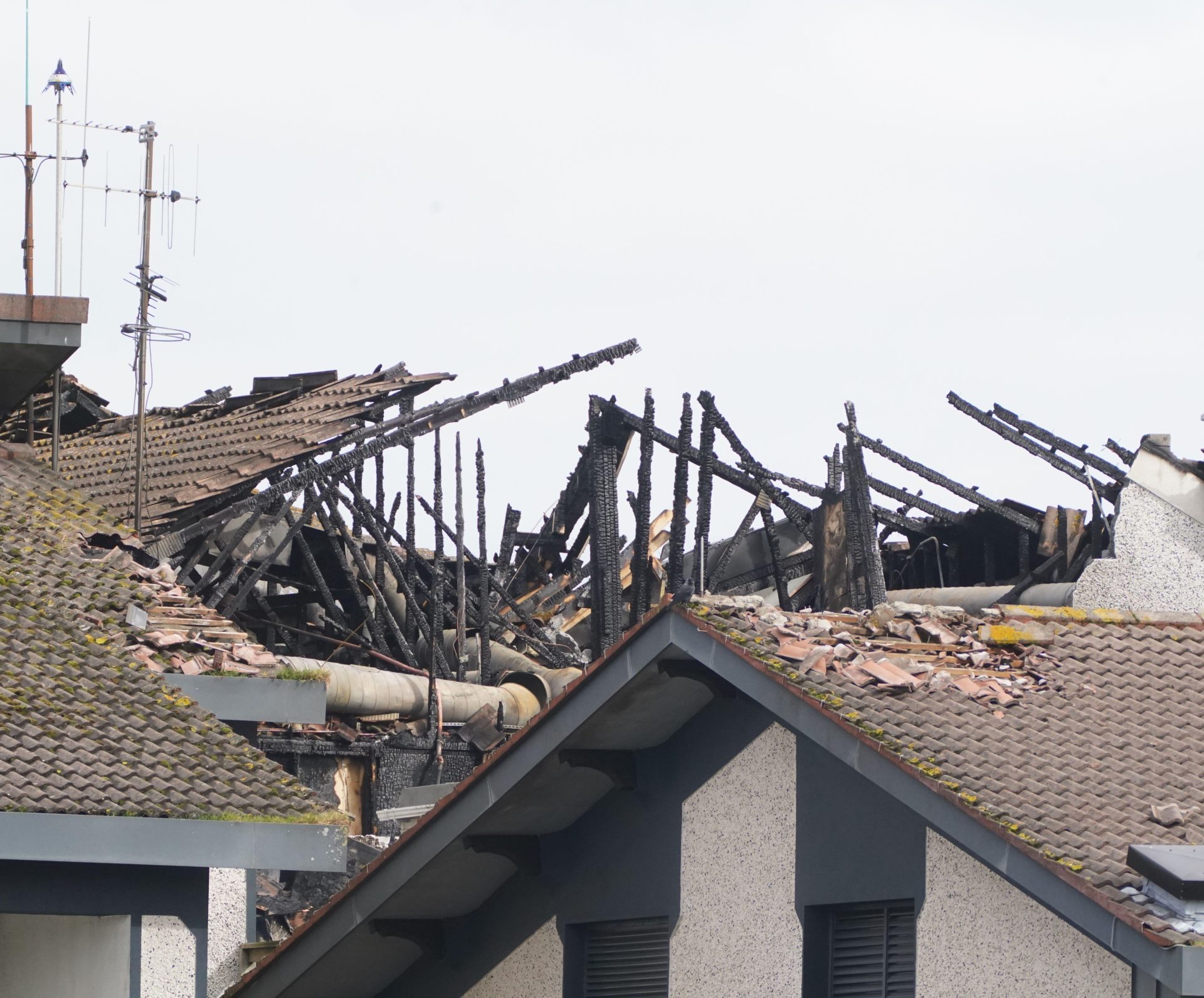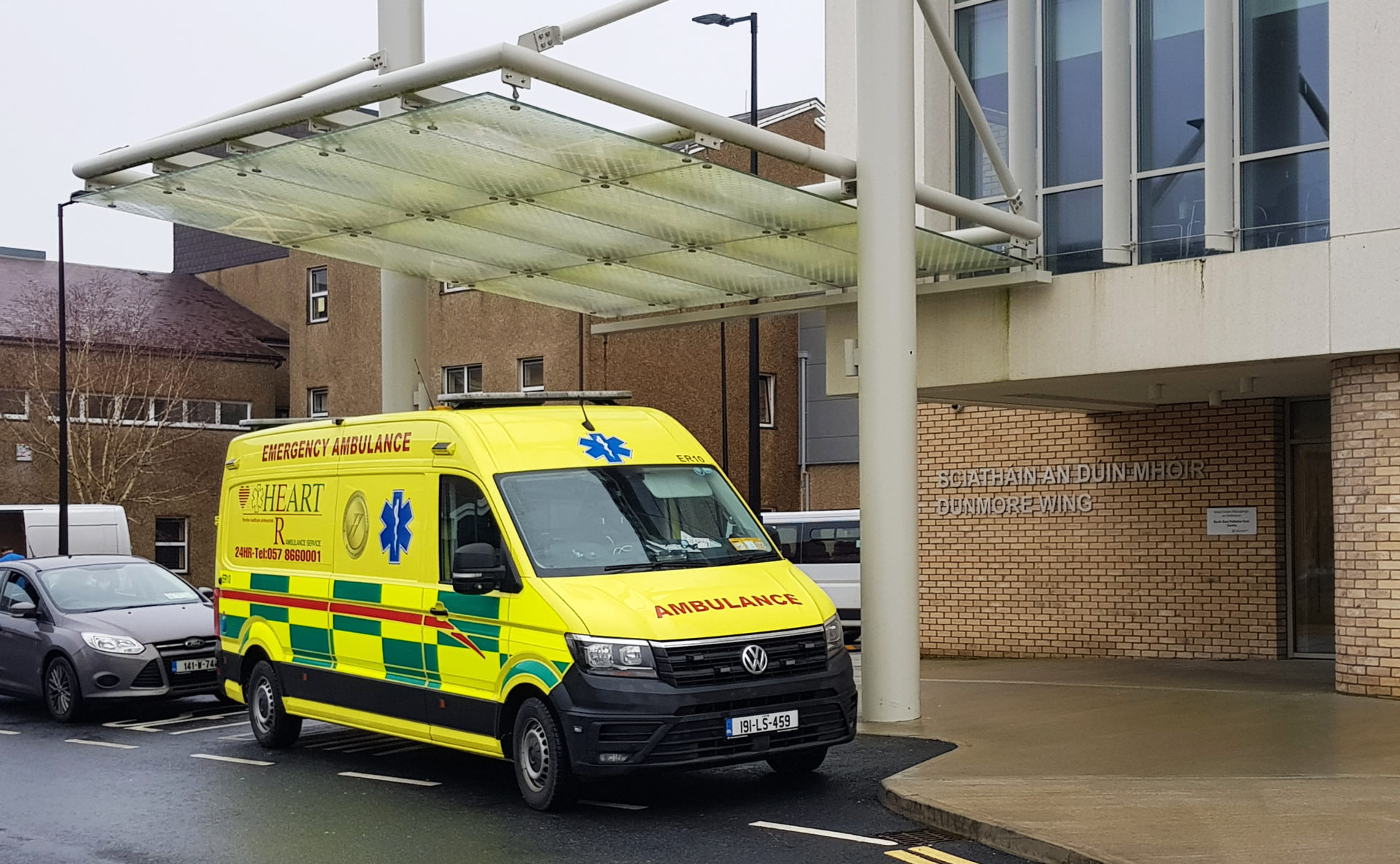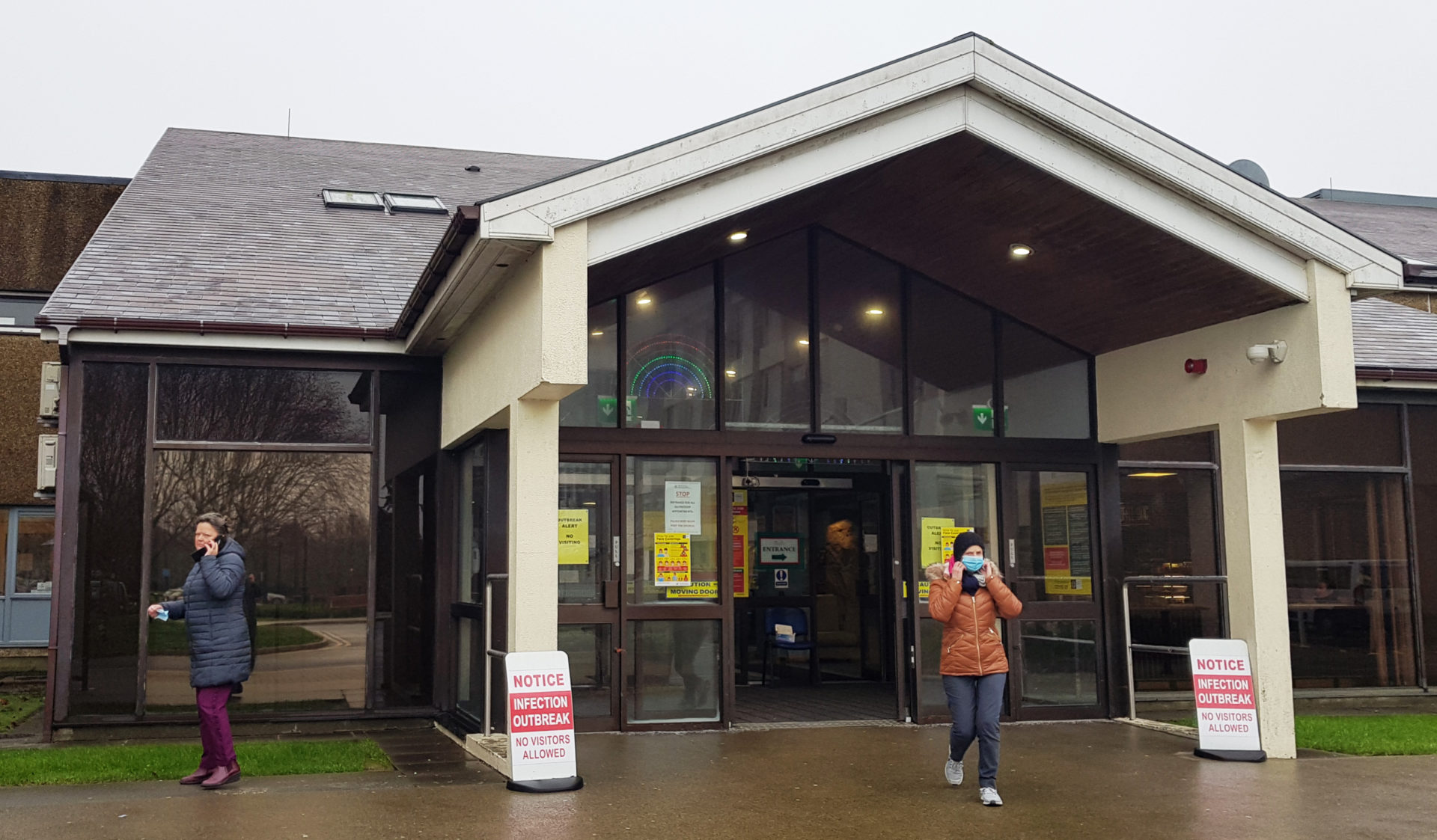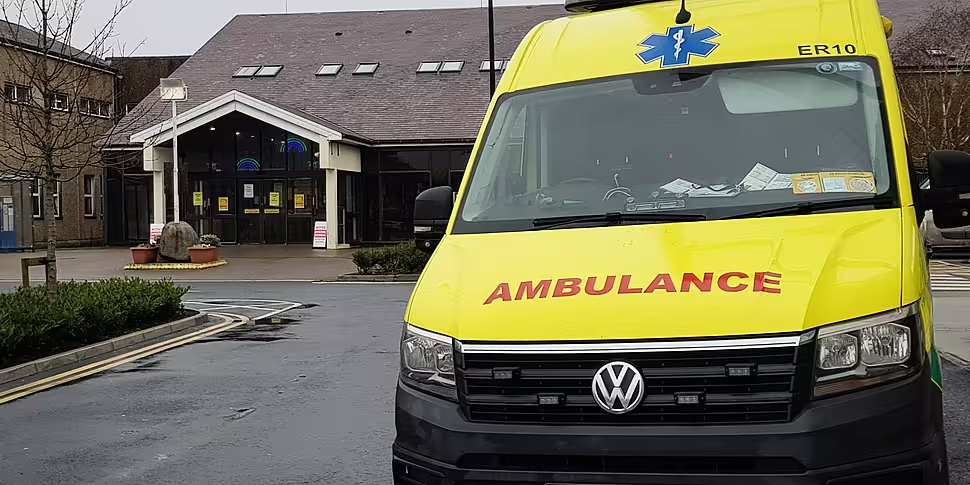The southeast is facing a serious threat to its healthcare systems, as Wexford General is "overfilled" and ambulances are in short supply.
Paramedics and ambulance drivers across the country are facing a shortage, with staff reporting they are being stretched past their capacities, and surviving on overtime.
However, the pinnacle of the problem is found at Wexford General Hospital, where staff are expected to provide care for Kilkenny, Wexford, Carlow and Waterford.
Ambulance drivers may even have to bring patients to Dublin, depending on the nature of the incident.
Last Tuesday, personnel in the southeast received a text which stated that the area is at NASCAP level three – meaning the National Ambulance Services is currently experiencing major pressure in both demand and resource levels.
Ambulance staff have been asked to divert their annual leave where possible or to provide cover on overtime.
 Fire damage to the roof at Wexford General Hospital on Thursday March 2, 2023 after a fire forced an evacuation of the building. Picture by: PA Images / Alamy Stock Photo
Fire damage to the roof at Wexford General Hospital on Thursday March 2, 2023 after a fire forced an evacuation of the building. Picture by: PA Images / Alamy Stock PhotoSpeaking to Newstalk's Josh Crosbie, Davie Rea - a paramedic in Wexford - said staffing levels and the fire in the hospital in March have created extra pressure on resources.
"In COVID, we were under extreme pressure, but since the fire in Wexford General, the pressure that has been on the staff is just horrendous," he said.
"You've late finishes every morning, late finishes every evening – you're never guaranteed to finish on time."
'Backed up'
In Waterford, Josh reported there was a significant issue with ambulances being backed up outside the hospital, with the patient in them waiting to be seen.
"They've actually constructed an outdoor tent for an overflow waiting area at Waterford University Hospital due to the demand for space," he said.
Josh also spoke with Emma, who had called an ambulance at 5:55pm for her 90-year-old father.
Although Emma lived 15 minutes from the hospital, she said the ambulance did not arrive until 8:30 pm.
"To be fair to the ambulance service, they did ring back every half an hour to check if he was deteriorating," she said.
"When we got to the WUH Emergency Department, we were probably waiting in the ambulance outside for an hour and a half as well."
 26/01/2021 Pictured is an ambulance outside University Hospital Waterford in Waterford City Photograph: RollingNews.ie
26/01/2021 Pictured is an ambulance outside University Hospital Waterford in Waterford City Photograph: RollingNews.ieAnother man detailed his experience of arriving at the hospital with a loved one at 11pm Monday night.
"10 o'clock Tuesday morning before we saw anyone, 1 o'clock the next morning before she got a bed, and now she's two days lying in the bed waiting for an x-ray," he said.
"If they could x-ray she'd be gone home."
Funding
Waterford locals and politicians have expressed their frustration with Government officials, as the hospital received only €7 million in the HSE Capital Infrastructure Programme worth €1.1 billion.
The Government has given more than €90 million to hospitals in Dublin, €55 million to Cork, €54 million to Limerick and €64 million to Galway.
University Hospital Waterford has experienced a 35% increase in daily emergency department attendance since the 1st of March, along with a 60% increase in the volume of ambulance arrivals.
 26/01/2021Pictured is the entrance to University Hospital Waterford in Waterford City Photograph: RollingNews.ie
26/01/2021Pictured is the entrance to University Hospital Waterford in Waterford City Photograph: RollingNews.ieIndependent councillor and former mayor of Waterford, Joe Kelly, told Josh that the system "really is not fit for purpose."
"The whole thing is just starting to crumble," he said.
"The staff themselves can start to suffer because of the strain, the pressure, the mental stress of what they're trying to deal with – it's barely surviving."
"We need more recruits into the paramedics and ambulance driver section [and] salary pay conditions have a lot to play in that.
"Until the government and the Department of Health take this very, very seriously, the situation in the Southeast is probably going to deteriorate even farther."
Short term solutions
The NAS capacity action plan in the Southeast is at level three, whereas the rest of the country remains at level two. It has agreed to a referral pathway for paramedics into the Wexford acute medical assessment unit.
The HSE says an arrangement was in place to use private ambulances which was due to end on the 31st of March, and was then extended to run up to the June bank holiday weekend.
The HSE did not confirm whether or not the private ambulance service would return.









